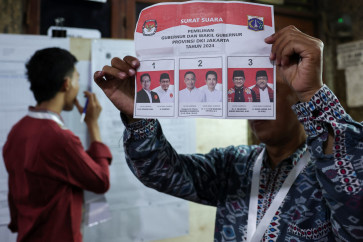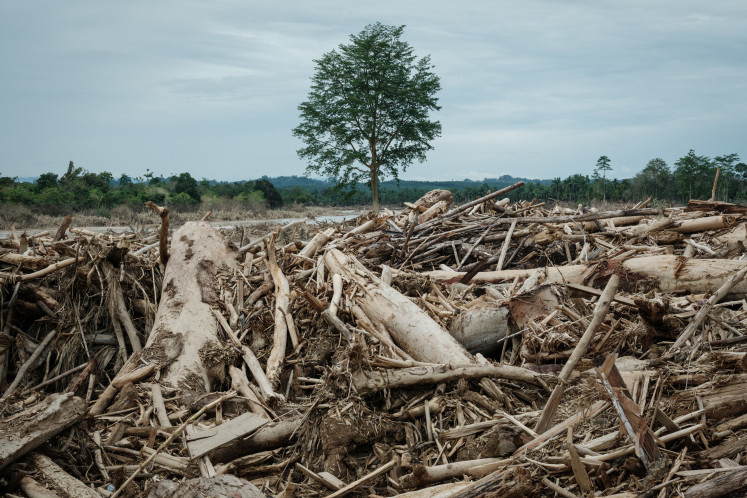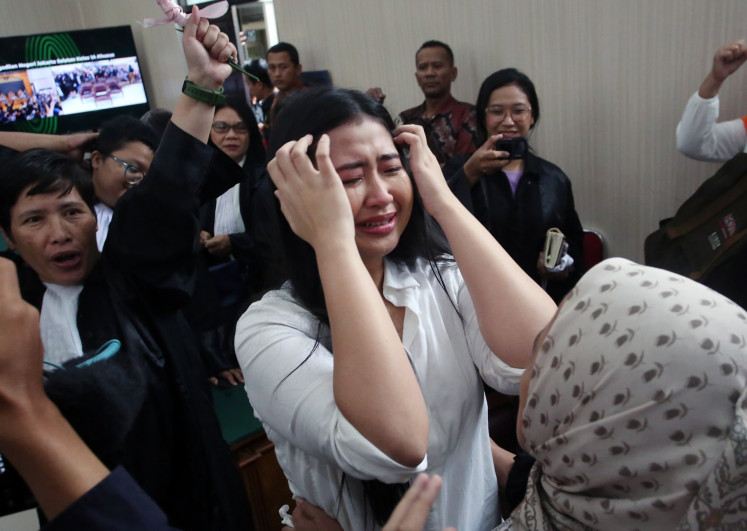Popular Reads
Top Results
Can't find what you're looking for?
View all search resultsPopular Reads
Top Results
Can't find what you're looking for?
View all search resultsBuilding grassroots Australia-Indonesia ties
The first and timeless challenge on the Australian side is finding ways to increase Indonesia literacy.
Change text size
Gift Premium Articles
to Anyone
A
ustralia enjoys a warm and strong relationship with Indonesia, but even its supporters often lament that it is dominated by officials and driven by the bureaucracies of both countries. In other words, that it’s too top-down.
While collaboration flourishes in government portfolios from trade to foreign affairs, defense and security, climate and energy, bottom-up ties between our peoples can be thin.
Calum Hyslop made this case in The Jakarta Post on Feb. 2 (“Australia-Indonesia relationship lacks diplomacy from below”). And he is right to a great extent. What the relationship boasts at the governmental level it unfortunately lacks at the level of people-to-people ties, a clunky bureaucratic term for social, cultural, artistic, academic, trade union, and religious connections between societies.
This should surprise no one.
Even the Comprehensive Strategic Partnership, the formal document that guides the bilateral relationship, tacitly admits the size of this problem in making connecting people its second of five priorities. It declares that Indonesia and Australia “are determined to promote a contemporary view of Australia and Indonesia in our respective societies, through social, arts and cultural collaboration”.
This is an issue that cuts both ways. When president Susilo Bambang Yudhoyono addressed the Australian parliament in 2010, improving public understanding of the other in both countries was the first priority he raised. And as he put it, “we still have a lot of work to do when it comes to people-to-people contact and when it comes to appreciating the facts of each other’s national life”.
Even as much progress has been made in other areas of the bilateral relationship like economic cooperation, deepening connections between Australians and Indonesians has lagged behind. Some might even see this agenda as failing, with Indonesians’ trust in Australia sliding from 75 percent in 2011 to 55 percent in 2021, according to a survey of 3,000 Indonesians by Australian think tank the Lowy Institute.
An EY Sweeney survey showed a more complicated picture. It found that, whereas 74 percent of Indonesians had a good understanding of Australia and 87 percent felt favorable towards it, only 53 percent of Australians understood Indonesia well and only 43 percent felt favorable toward it. Those who manage the bilateral relationship know that this is a long-standing issue we must tackle even more urgently.
Why is this such a stubborn problem and how can we reduce it to more manageable size over time? If there were easy solutions, this would have been fixed long ago. But there are certain policy interventions—some of which have been tried and proven to work in the past—that may help reduce the enduring information asymmetry about each other that breeds ignorance and worse.
The first and timeless challenge on the Australian side is finding ways to increase Indonesia literacy. The teaching of Bahasa Indonesia (Indonesian language) has very regrettably been in net decline in Australian universities in recent years, with programs closing at La Trobe University, Western Sydney University, and the University of New South Wales. Only 755 students learn Indonesian in Australian high schools, down 50 percent from a decade ago. This decline should be stemmed and reversed as a first step.
A second step would be to increase funding to Australian and Indonesian not-for-profit organizations pursuing joint cultural projects. One such initiative is the Bali Artists’ Camp Art and Cultural Exchange Project, which from 2012-2018 facilitated exchanges between Indonesian and Aboriginal artists in the Northern Territory. These exchanges were funded by government bodies in both countries and provide a highly successful model for arts diplomacy projects between Australia and Indonesia.
Thirdly, we need to look for and support the champions driving meaningful connections across our societies. I want to pay tribute in this respect to the amazing work of the Bali Sports Foundation, which receives some funding from Australia’s Department of Foreign Affairs and Trade. Its founder Rodney Holt is an Australian who introduced wheelchair basketball to Indonesia ten years ago to give back to disadvantaged Indonesian disabled youth via sports. Active in Bali, Lombok, Sulawesi, West Timor, Kupang, and Timor-Leste, it’s a truly grassroots sports diplomacy success story.
A fourth avenue of deepening the connections between both societies is by increasing the flow of people. Hyslop argues for increasing the intake of Indonesians migrating to Australia. This is one consideration but not the only one, as it is primarily driven by demand on the Indonesian side. Other mechanisms might include incentivizing Indonesian students, who are highly educated, tech-savvy, and find Australia attractive as a study destination, to study in greater numbers in Australia.
Finally, we need to increase the number of Australians who visit Indonesia outside Bali. New Colombo Deal participants are one important part of this strategy, but they shouldn’t be the only one. Regular university exchanges and study abroad experiences might play an important role, and with Indonesian universities currently having few Australian studies centers and academic experts, there is guaranteed to be mutual learning that filters into each side’s understanding of the other.
Top-down, state intervention will inevitably remain a central feature in the delivery of these programs, as it currently is.
However, we must at the same time work to diversify away from government funding so that more Australian and Indonesian firms decide to invest more and in more sectors of each other’s economies. The Australia Indonesia Business Council and the government-funded Australia-Indonesia Institute are both well placed to help drive this change.
We have a long way to go until Australians and Indonesians know each other as intimately as befits neighbors wedded by geography, trade, culture, and by strategic circumstances. But as a Bahasa Indonesia speaker and life-long student of Indonesia I have no doubt that the rewards will be worth the effort required on both sides of the Arafura Sea.
We in Darwin, where I am from, look forward to being central players in the inter-generational effort of helping to understand each other more fully.
***
The writer is Member of Parliament for Solomon in the Parliament of Australia.











